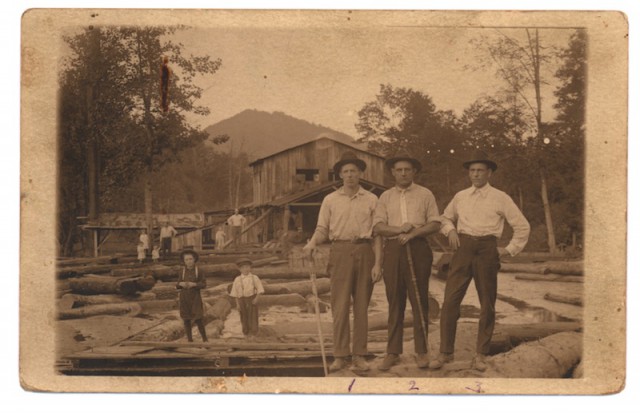
Historic Loggers
Industrial logging came to Appalachia with the railroad in the late 19th century. As timber supplies in the Northeast and the Great Lakes regions dwindled, National Lumber Corporation shifted to the vast hardwood forests of the Southern mountains. Logging camps and timber mill towns like Canton, North Carolina provided supplemental income for farmers. Many mountain coves in Western North Carolina had small gauge railroad tracks laid up them to haul logs out. The new steam powered machines dramatically increased lumber production, and clear cutting threatened the viability of forest lands like the Smoky Mountains. A combination of timber corporations moving on to the uncut forests of the Pacific Northwest and scientific management of forests reduced the scale of logging in Appalachia, bringing the prospect of a smaller scale, but more sustainable industry.

